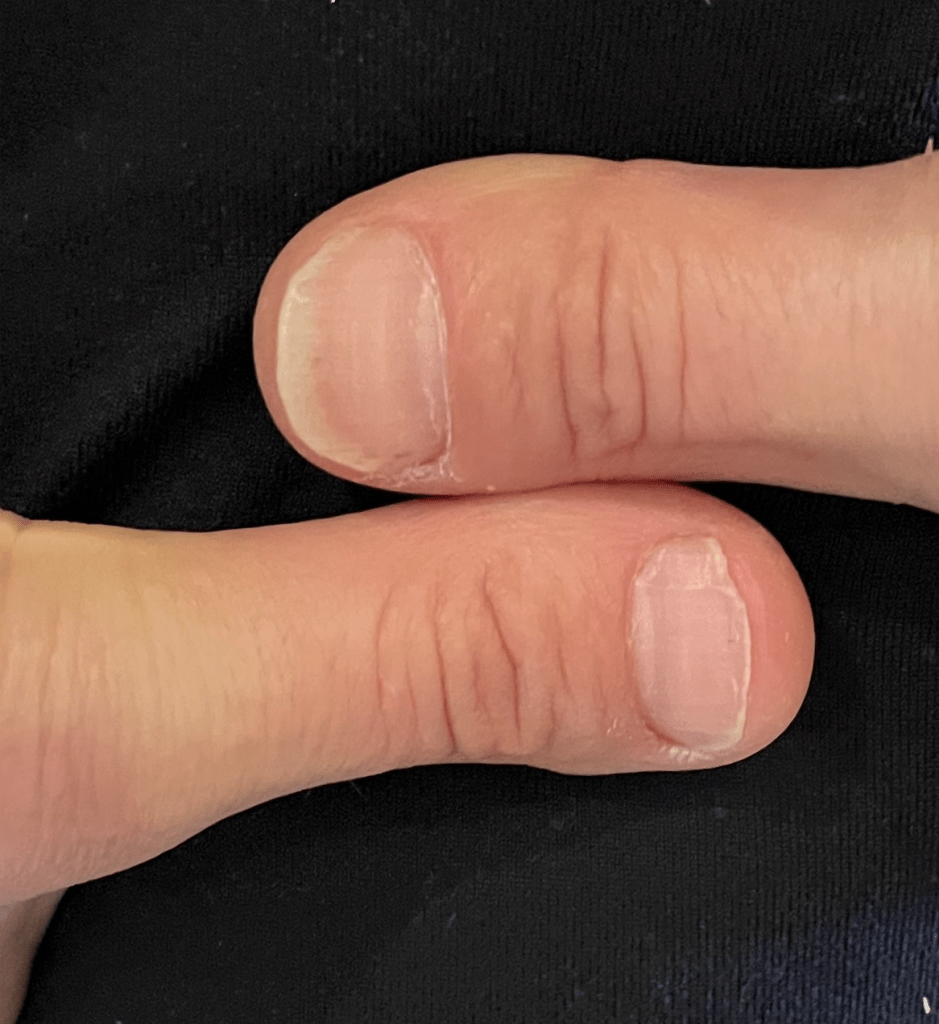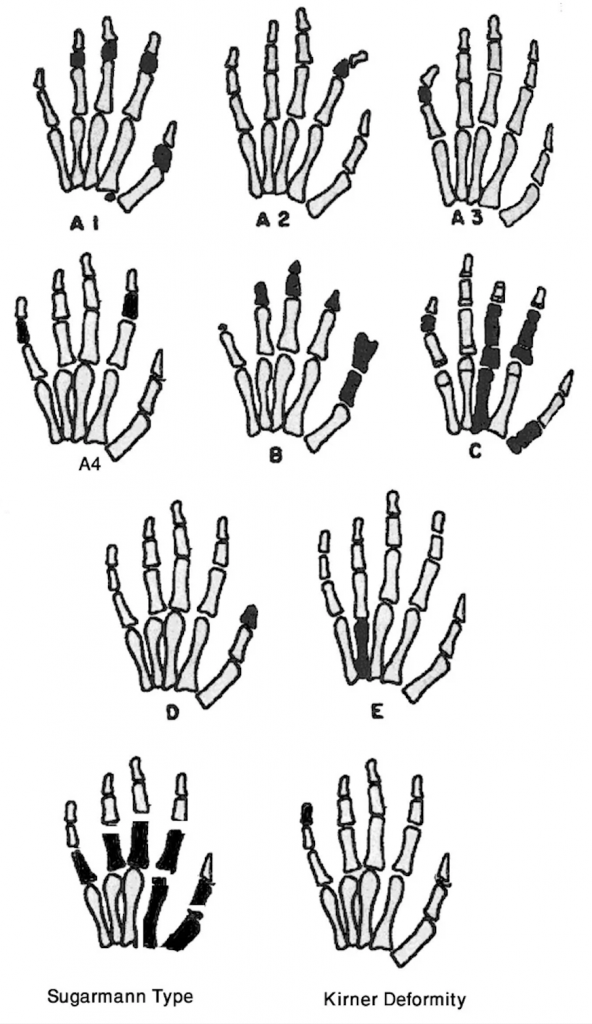Murderer’s thumb is one name for brachydactyly, type D. The is a short, round distal phalanx of the thumb and may be one on side or both. The nail looks wide relative to the overall length of the thumb. Other common names include stub thumb and club thumb (not to be confused with the medical condition of clubbing). Good additional information can be found on OMIM.
Genetics
The condition is associated with the HOXD13 gene. Conditions which affect the entire HOXD gene lead to more severe deficiencies of the upper extremity. This is classically inherited in an autosomal dominant fashion which means 50% of children of a parent with this condition will also have this thumb anomaly.

Murderer’s Thumb
Treatment
Treatment is rarely if ever indicated. This is an appearance issue but function is typically normal although some may describe some difficulty with activities that require major thumb bending (i.e., thumb IP joint flexion), including texting.
Brachydactyly
Murderer’s thumb is one type of brachydactyly. Brachydactyly means ‘short finger’ (from Ancient Greek) and there are a large number of different brachydactylies. Most are quite rare but Type D is one of the more common types, estimated at 2% incidence. There are a wide variety of brachydactylies and these should not be confused with symbrachydactyly (short finger with syndactyly). Type E is also common and has been the source of previous posts on this blog.

Summary
Murderer’s thumb is a rare condition with a short, rounded distal phalanx of the thumb. It rarely requires treatment as it is primarily just a difference in appearance.
Nice to know what this is called as both of my thumbs have it but it’s more pronounced on the left. Neither of my siblings have it and neither did my parents but my mom always said her dad did. Can that happen that it skips a generation?
Thanks Kathy. The genetics can be unpredictable and can certainly change. While skipping a generation is not common, it certainly may be your scenario.
I have a short thumb on the right. About 25 years ago I saw a rheumatologist for autoimmune issues. He was very excited about my thumb and said if I traced back in my family I would find a relative who also had one. I said, “yeah, my dad”. He was surprised and said it usually does not happen that close together. I have 5 kids and none of them have it.
Thank you for writing. There are variable genetics but some evidence that at least some forms are autosomal dominant (likely explaining your inheritance from your dad).
Kathy I too have it as well. Both thumbs and big toes more noticeable on my right thumb and toe. My parents and siblings also doesn’t have it but I got the same story by my mother who said her father had it.
I have two clubbed thumbs as well. My dad has normal thumbs, and my mom has one clubbed thumb and one normal thumb.
Thank you for info.
I have one on my right hand thumb, my mother also have one on her right and my grandmother also on her right hand.
My mother told me that my great-grandmother had one in her right hand side AND ALSO my Great-great-grandmother had some (my mother never met her great-grandmother so i will say my great-great-grandmother’s type is unknown to what extent. That be some generations of woman and myself the first male having it.
Kero, my right thumb is stubbed, one of my sons has both stubbed, so you’re in same scenario as my son. I don’t know about about older generations. My brother’s thumbs are normal. My son and I call them “useful thumbs” as we do a lot of DIY and they seem nice and strong, lol!
Hi I have them too on both hands, I call them special thumbs and find 10 pin bowling an issue as I have to have the biggest ball to fit my thumb in haha! I love that u call them useful
Hello to my fellow Club Thumbers.
It is only my right thumb that is shows this wonderful trait. I inherited this from my fathers scottish side of the family and his brother has this on both of his thumbs yet his children did not inherit this trait.
Neither of my sons have it but it has so far passed onto my grand-daughter from one son who has it on one hand and another grand-daughter from my other son who has it on both hands.
Funny how these traits just pick and choose how, when and who they show up on but I’m glad I got picked for this one.